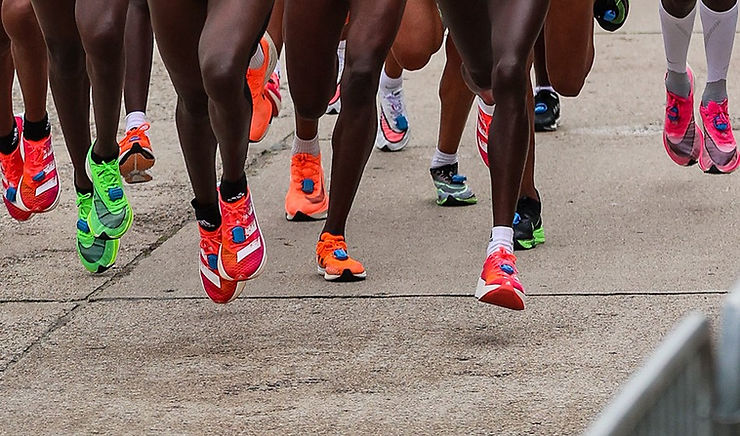By: Benjamin He
Spring: The University of Washington track team produced eight sub four minute milers, each from a different runner.
June: Four high school runners managed to break that same barrier in the same race.
In the professional running world, three world records were obliterated in Paris this year. Faith Kipyegon of Kenya set a new record in both the women’s 1,500 meters and 5,000 meters, then set another record on Friday, smashing the women’s one-mile world record by almost five seconds when she broke the tape in 4 minutes 7.64 seconds, and Lamecha Girma of Ethiopia set a new mark in the men’s 3,000-meter steeplechase.
And perhaps most scandalous of all…my brother managed to steal my Jolly Rancher Stix right in front of him in less than 10 seconds (Planning tactically is hard for a four-year-old.)
According to my powers of detective level reasoning and murder mystery deduction (and a lot of scientists), I believe that the facts point straight towards…their shoes.
That’s right. All these new marathon times, excellent runs, and elusive candy heists (Well, maybe not the heist) all seem to be related to the runner’s “super shoes.”
The supershoes have seen a lot of development in recent times, giving ordinary shoes springy midsole plates that provide a runner with higher rebound energy as they push off. Sports scientists believe that these new supershoes can be useful for not only competitively running, but also just recreational running.
“Because the shoes are a new tool, the more we run in them, the better we adapt,” said Geoff Burns, a physiologist and biomechanics expert with the U.S. Olympic and Paralympic Committee.
The first supershoes were released by Nike in 2016. With their first thick-soled, energy-returning shoes, the Nike Zoom Vaporfly 4%s blew away shoe enthusiasts and runners alike. They were so much faster than other shoes that World Athletics, governing body of track and field, started limiting the height of a shoe’s midsole in 2020. Nowadays, practically every single major shoe production company has got a supershoe product somewhere, with hundreds or thousands of people wearing them.
The supershoes are very popular with professional or marathon runners, which allow them to get much faster times than if they weren’t wearing them.
“Since I’m going to be wearing super shoes in races, I want to get a good feel for them in training,” says Lindsay Flanagan, who has a personal best marathon time of 2:24:43 seconds, and one of three U.S. women who will run in the World Championships marathon in Budapest in August. “I’ve found that I can log more quality days, as well as more mileage in general, because my legs come around sooner.”
Not all runners feel this way, it appears. They believe that they can build up their strength using normal shoes, before gaining that extra boost of speed using supershoes during a race.











